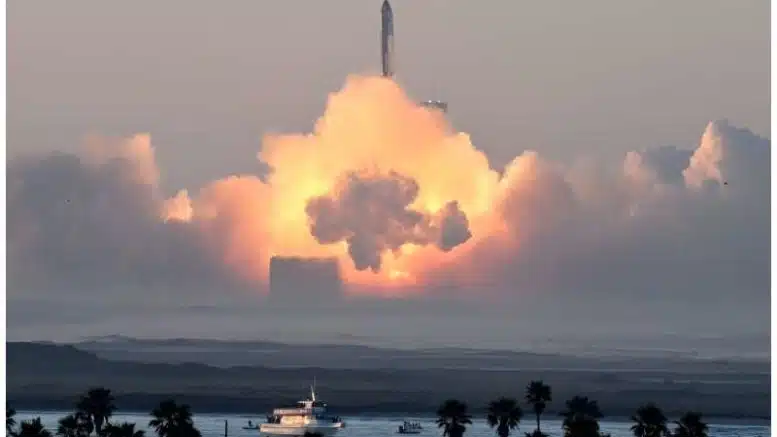SpaceX, under the helm of Elon Musk, has set its sights on March 14 as the earliest potential date for the next test launch of its ambitious Starship rocket, a pivotal step in its mission to eventually establish a human presence on Mars. Despite encountering setbacks with two previous test launches resulting in dramatic explosions, SpaceX remains committed to an iterative development approach aimed at accelerating progress.
Announcing the potential test date on X, a social media platform owned by Musk, SpaceX indicated that regulatory approval would be the final determinant for the launch. The forthcoming test will see the Starship rocket taking flight from Boca Chica, Texas, with its splashdown planned in the Indian Ocean.
Critical to NASA’s lunar exploration ambitions for 2026 is the certification and readiness of a modified version of Starship for use as a lunar lander. The towering stature of Starship, standing at 397 feet when both stages are combined, surpasses iconic landmarks such as the Statue of Liberty by a significant margin.
With a Super Heavy Booster generating an impressive 16.7 million pounds of thrust, Starship boasts nearly double the power of NASA’s Space Launch System (SLS), the world’s second most potent rocket. Despite encountering setbacks, including a catastrophic explosion during its maiden flight in April 2023, SpaceX remains undeterred in its pursuit of space exploration milestones.
The second test flight in November 2023 saw partial success with the booster separating from the spaceship, yet both components ultimately met a similar fate, exploding over the ocean. The Federal Aviation Administration concluded its investigation into the incident last month, outlining 17 corrective measures that SpaceX must undertake before proceeding with future launches.
SpaceX’s “rapid iterative development” methodology has proven effective in the past, earning the company trust and reliance from both NASA and private sector entities. However, the clock is ticking for Starship to align with NASA’s lunar mission timeline, as the United States faces competition from China, which aims to land humans on the moon by 2030.
In addition to demonstrating the safe launch, flight, and landing of Starship, SpaceX faces the challenge of developing “Starship tankers” capable of refueling the main Starship in Earth orbit—a critical step for extended space missions, including those to the moon. As SpaceX navigates these technical hurdles, the eyes of the world remain fixed on the company’s progress toward unlocking the mysteries of space travel.

